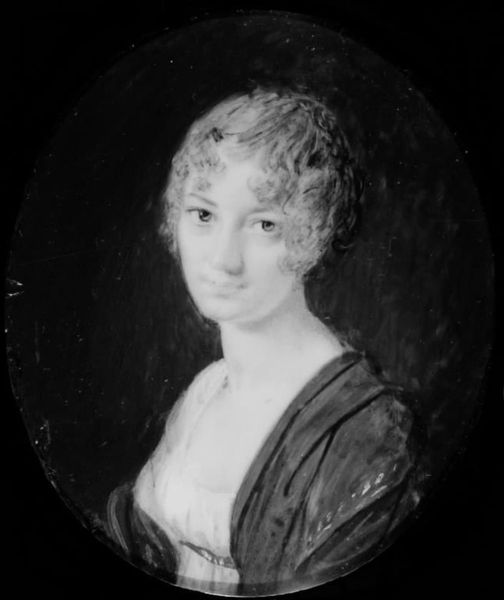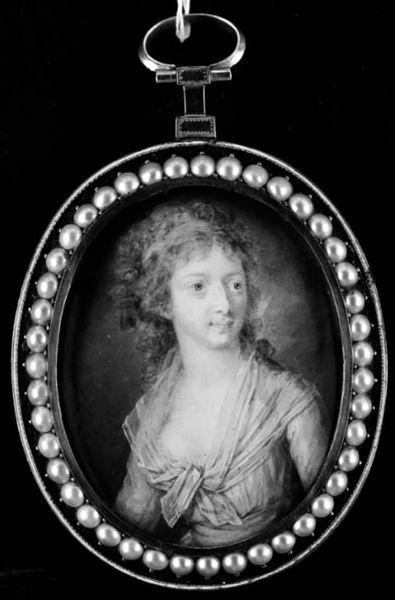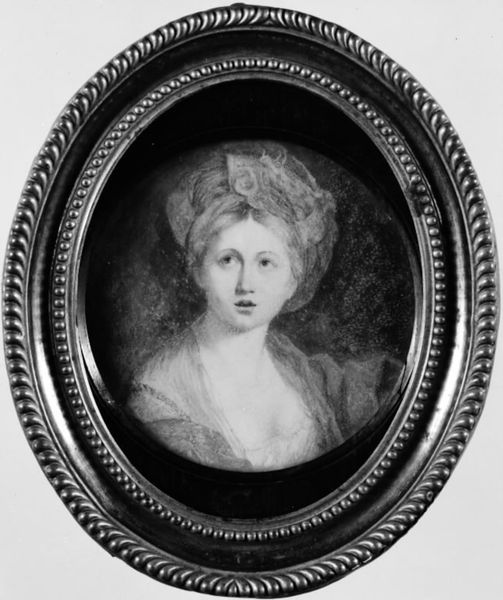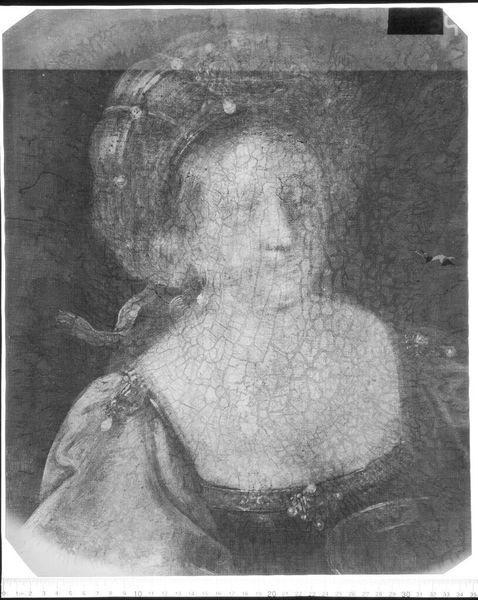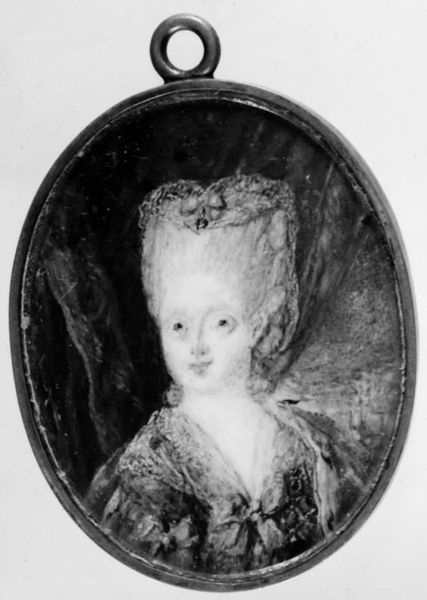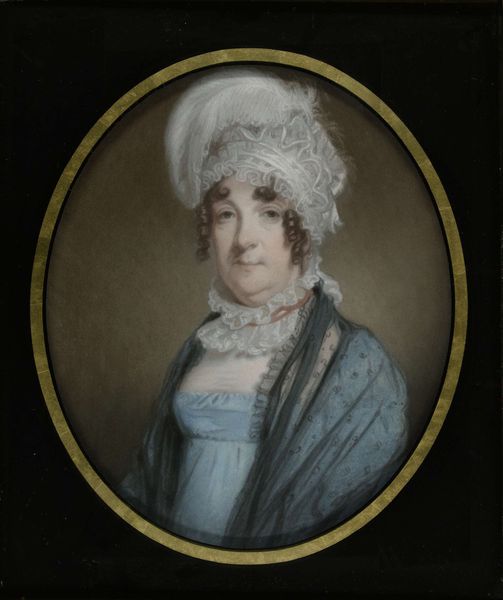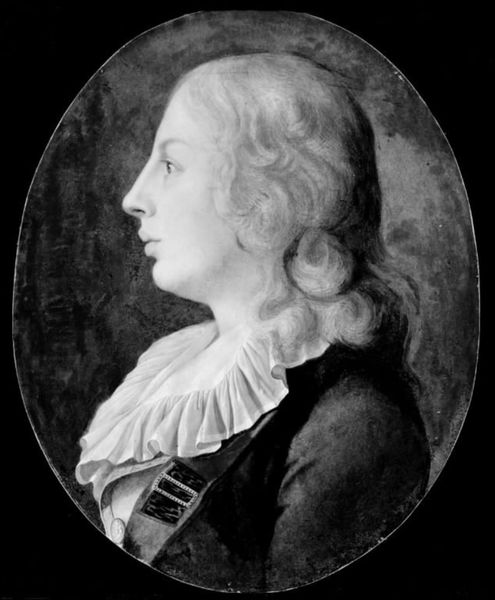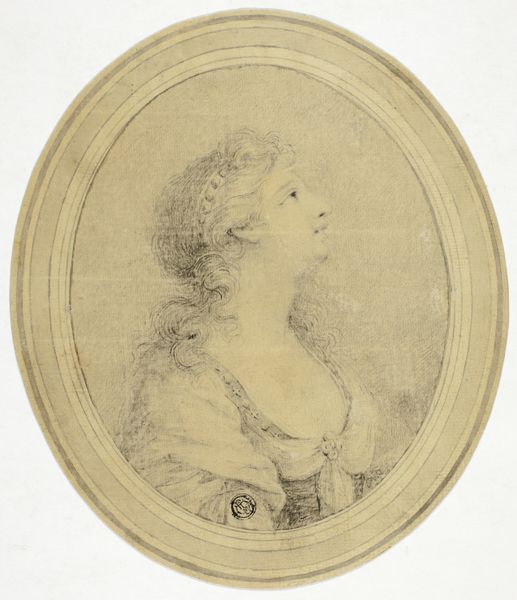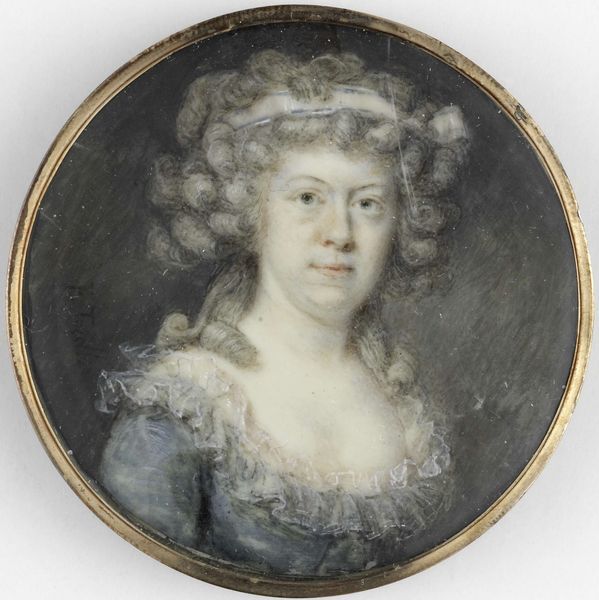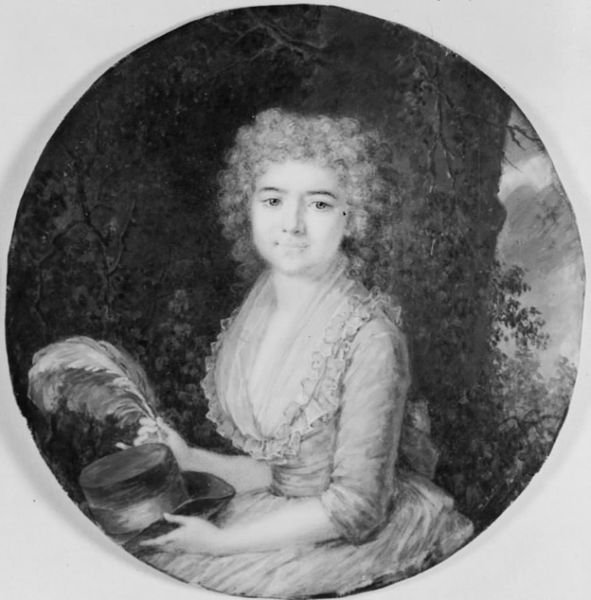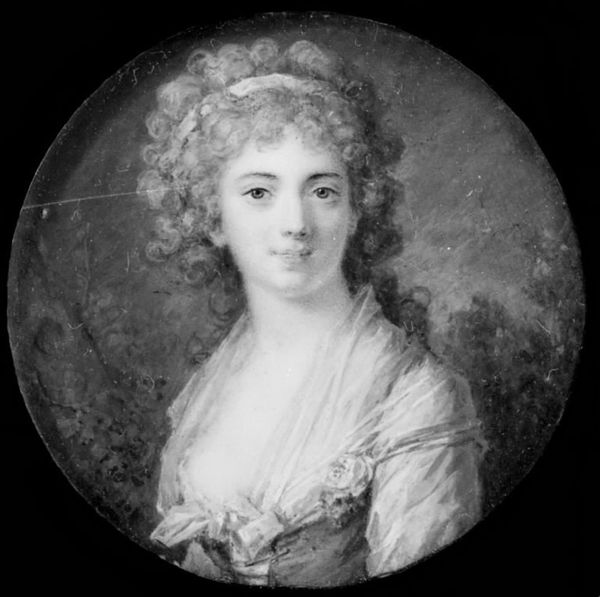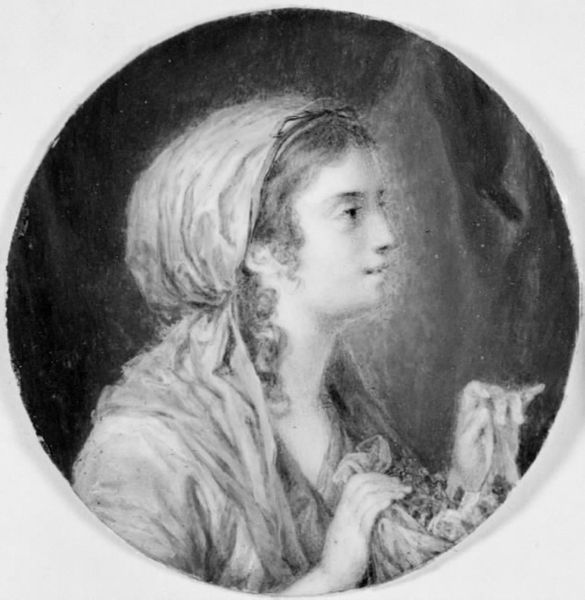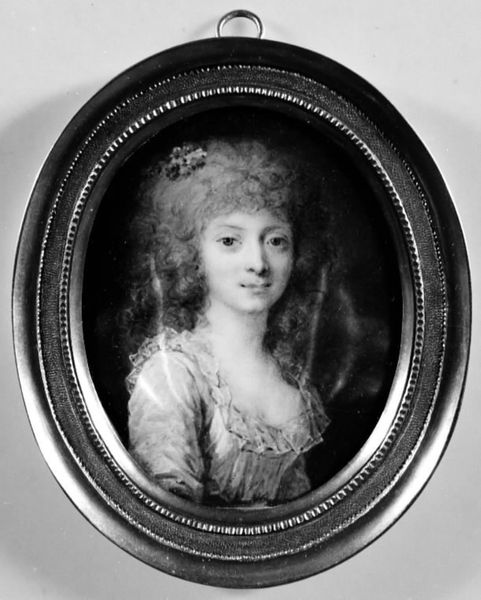
Portræt af en ung pige med kappe, rød kjole, blåt forklæde 1770s - 1780s
0:00
0:00
Dimensions: 7.3 cm (height) x 5.7 cm (width) (Netto)
Curator: Here we have “Portræt af en ung pige med kappe, rød kjole, blåt forklæde,” or “Portrait of a young girl with cape, red dress, blue apron,” created sometime in the 1770s or 80s. The artist, as far as we know, is Christopher Deram. It’s a pencil drawing currently held at the SMK, the National Gallery of Denmark. Editor: It’s… striking. Such simple materials creating something so emotionally present. The tilt of her head, the light on her face - there’s a real fragility captured here. Is it typically shown in black and white? Curator: It’s rendered solely in pencil. Its grayscale palette lends it a certain austerity, especially considering the Rococo period it aligns with, known for its decorative flourishes. It makes me think about the economic realities of portraiture then, and whether simpler materials democratized access to image-making. Who were drawings like this *for*, and what was the labor involved in its creation? Editor: Good point. Thinking about it in the context of portraiture at the time, it's fascinating. While aristocracy were immortalized in lavish oil paintings intended to project power, this feels much more personal and immediate. Perhaps even intended as a gift for someone, or as memento? Curator: Precisely! Pencil drawings were far more portable and affordable, opening up a market for the burgeoning middle class to participate in portraiture. What implications did this have on the construction of identity and self-presentation within broader society? It encourages one to contemplate the sitter's social standing and her potential relationship with the artist himself. Editor: It almost strips away the layers, doesn’t it? No symbolic finery to decipher, just the girl herself and her humble attire. So raw and poignant. I can’t help thinking that its lack of ostentation ironically allows the sitter’s own vulnerability to take center stage, turning away from artifice towards more natural portrayals of individuals, reflecting the era's shifting sensibilities and a growing interest in realism. Curator: Well, it's been an interesting discussion that really makes me consider Deram’s piece in relation to evolving socioeconomic structures of art production and consumption. Editor: Yes, it made me re-think my own interpretation as it stands against the larger historical landscape.
Comments
No comments
Be the first to comment and join the conversation on the ultimate creative platform.
